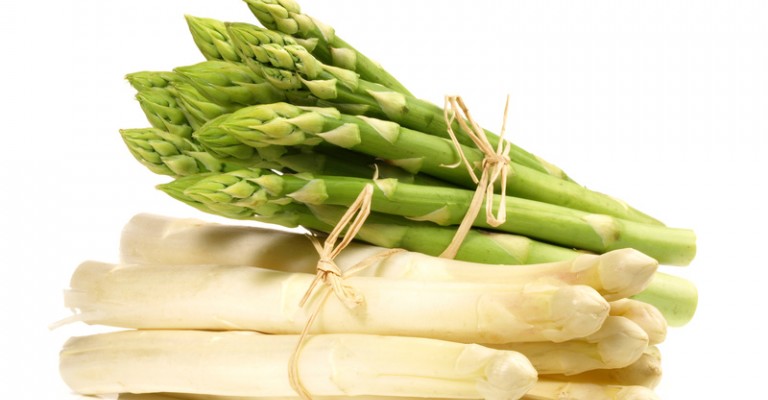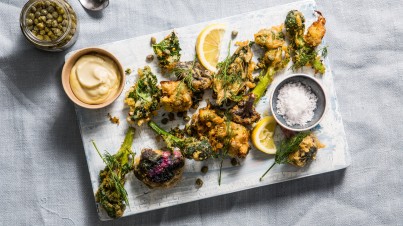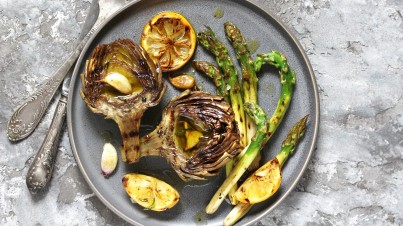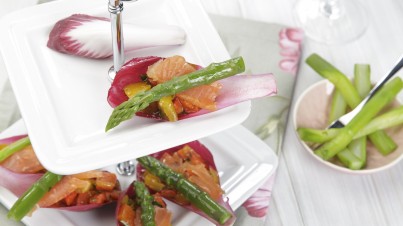Asparagus are new fern-like sprouts or shoots (often referred to as spears) from a below ground crown with an adventitious root system. The thinner the shoot, the younger the crown. Quite often in cultivation, these younger shoots are pruned off in the first season, to encourage thicker and more numerous shoots the following season.
Spears can be harvested green, with the shoots growing above the ground and have a more intense flavour. For white shoots, a more labourious task of 'hilling' over the growth with soil, have them develop in the dark, then dug out at harvest - these tend to have a more mellow taste but a very charateristic aroma.
It's important to harvest shoots quite young to prevent them from becoming woody and less palatable.
How to prepare
Trim off the bottom of the shoot before use. A handy chef's tip is to bend the shoot and where it snaps is often where the lower part is more woody and should be discarded.
Green asparagus do not have to be peeled and are used whole, or cut into bite size pieces, whereas white shoots need to be peeled all the way to the tip (a special purpose peeler can be found in kitchenware shops).
Cook asparagus in plenty of seasoned water and are ready when the lower part of the shoot is slightly soft. Often when pan frying green asparagus, their colour becomes quite vibrant when ready. It's quite easy to over cook them and ideally you want shoots that are firm but tender.
Preparation time for green asparagus:
Baked: 3 - 6 minutes
Sautéed: 3 - 5 minutes
Microwave: 2 - 5 minutes
Deep fried: 2 - 4 minutes
Steamed: 6 - 10 minutes
Preparation time for white asparagus:
Baked: 6 - 10 minutes
Sautéed: 2 - 3 minutes
Microwave: 5 - 8 minutes
Deep fried: 2 - 3 minutes
Steamed: 8 - 13 minutes
Buyer's and storage guide
Asparagus are usually sold in bunches, held together with a rubber band. Look for bunches that have firm shoots without any wilted tips or shrivelled stems, and have a fresh, unfiorm colour. Often they're kept in a shallow tray of water to keep them fresh.
Being susceptable to drying out, store in the refrigerator with some moist paper towel around the bottom. It's also advised to store standing up as the tips actually continue to grow and if left lying flat, tips can bend and grow upwards. Where possible, always use asparagus fresh.
Most asparagus are very seasonal, particularly white ones, but often they can be found canned. Nothing is a good as fresh though.
Serving
- served with ham, small potatoes and boiled eggs or cut up raw in salads with orange segments
- sautéed with garden herbs, or fresh tomatoes and anchovies
- puff pastry tarts with cheese and asparagus as appetizers
- use the shells and the lower part for a tasty broth
- deep fry halved thin asparagus in a layer of spring roll, or wrap 2-3 stems in prosciutto and bake



